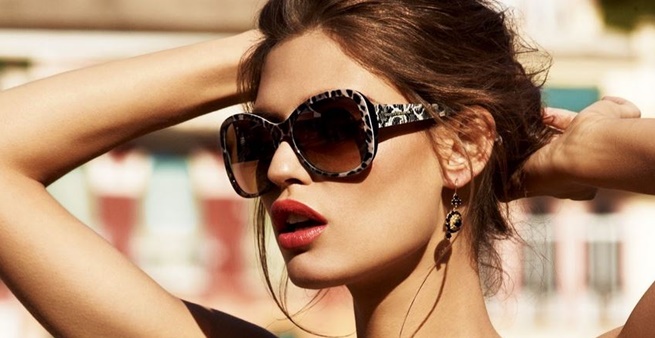Do you have a different pair of sunglasses to go with specific attire or for a particular occasion? Yes? Then you are among those who treat sunglasses as a fashion accessory. You are not alone. The fact is, although sunglasses were originally invented as a protective item, they went into mass use only when they became fashionable.

The journey from a utilitarian artefact to a fashion must-have was a slow one. There is evidence that even in the prehistoric times the Inuit people living in Canada, Greenland and Alaska wore small flat panels made of bone with narrow slits to protect their eyes from the brilliant glare of sunlight reflected on the snow.
We need to fast forward several millenniums, all the way to the first century AD, to find the Roman emperor Nero watching gladiator games through polished coloured gemstones.
The honour of inventing the first pair of sunglasses, however, belongs to China. We know that sunglasses with lenses made out of smoked quartz appeared in China in the 12th century. There is some evidence that opaque crystal sunglasses were worn by judges in Chinese courts of law even earlier, not as protection against the sunlight, but in order to hide the expression in judges’ eyes while examining witnesses.

In the 18th century England, an English optometrist claimed that blue or green tinted glasses could correct specific vision impairments; protection from the sunlight was not considered. Several hundred years later, it was recognized that glasses with darkened lenses, usually yellow or brown, had a role in shielding eyes from the environmental glare.
In the 19th and early 20th century these glasses were prescribed to syphilis sufferers, because one of the symptoms of this illness is hypersensitivity to light.

It took just a few decades longer for sunglasses to come into mass use, mainly thanks to Hollywood movie stars, who wore them to hide from the masses and avoid being recognised.
Today, sunglasses are simply unavoidable, both as a fashion accessory and as a protective gear. Experts say that you should wear sunglasses even if the sun doesn’t bother you, in order to avoid the cumulative UV damage to your eyes. Your sunglasses should filter out 95% to 99% of ultraviolet A and ultraviolet B light (UVA and UVB). Cheap glasses can be just as good at blocking harmful UV rays as expensive ones, but it is important to get them from a reliable source.

Sunglass lenses are mostly made out of plastic, which is lighter than glass and more durable. Gray and brown are the most popular lenses, because they distort colour perception the least. Yellow tints, on the other hand, increase the contrast.
If you plan to partake in water or snow sports, you may want to equip yourself with polarised or mirror-coated sunglasses, because they reduce the glare of sunlight reflected from shiny surfaces.

Gradient lenses that are tinted from the top down are suitable for driving. They protect your eyes from overhead sunlight and allow more light through the bottom half of the lens, enabling you to see the dashboard clearly.
Sunglass come in full rim, semi rim, and rimless versions. The frames are usually made out of plastic or metal, although some manufacturers use wood.
Shape-wise, the choices are practically limitless: round, rectangular, oval, square, cat-eye, and so on. The rule of the thumb is to choose the shape that does not repeat the shape of your face. For example, if your face is square, avoid wearing square sunglasses; if round, stay away from round sunglasses. Of course, those are only guidelines, and we frequently see one and the same face look great when adorned with many different styles of sunglasses.









